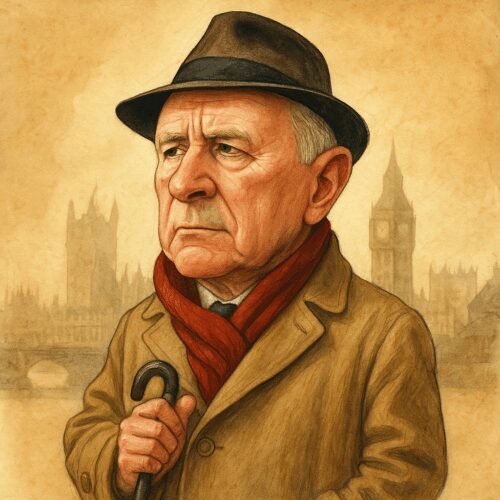7-minute read
Premise
Imagine a spy series where the biggest threats are bureaucratic whispers, not explosions. Sound dull? Not here. Mr Palfrey of Westminster keeps viewers hooked with its calm, cerebral tone. It’s like ‘The West Wing’ but with espionage. People stayed watching because it’s all about subtle mind games, not flashy gadgets. If you’re tired of the usual action hero smokescreens, this series delivers slow-burning intrigue, layered performances, and a soundtrack that’s more ‘sit back and think’ than ‘punch a guy out’. It’s a show that trusts its audience to follow the diplomatic chess match. And trust me, it works.
Characters
- Alec McCowen as Mr Palfrey – A quiet civil servant, who’s secretly a shrewd spy-catcher. Think mild-mannered, but with razor-sharp brains. His cool demeanor hides a world of cunning.
- Clive Wood as Blair – Palfrey’s field operative, part tough guy, part loyal sidekick. He balances Palfrey’s calm with a more direct style. Think ‘action guy with a brain’.
- Caroline Blakiston as the Coordinator – Palfrey’s supervisor, often stern, sometimes a thorn. She’s sharp, controlling, and keeps the show’s tension simmering.
- Briony McRoberts as Caroline – The secretary. Quiet, efficient, and trustworthy. She’s the unsung hero keeping operations smooth behind the scenes.
Plus, guest stars like Julian Glover and Leslie Phillips add gravitas, bubbling up the shows’ authentic British charm.
Production and Style
The show was made by Thames Television, so it’s polished but not flashy. Inside settings dominate, with minimal action. It’s basically a dialogue-driven, slow-burn chess game. Episodes last around 50 minutes, but never feel rushed. Every word and pause counts, creating a tense, psychological atmosphere.
Series Structure & Episode Highlights
- Pilot (“The Traitor”): Introduces Palfrey, the master interrogator, calm on the surface but deadly inside.
- Series 1: Features episodes like “Once Your Card Is Marked” where Palfrey digs into diplomatic baggage and schemes.
- Series 2: Gets messier with defections and Cold War secrets in episodes like “Freedom from Longing.”
- Special (“A Question of Commitment”): A standalone Blair story that’s darker and more introspective.
Writing, Themes & Tone
This isn’t your typical spy thrill ride. Instead, it’s about psychological warfare, loyalty, and institutional pressure. Expect lots of quiet power plays and moral ambiguity. The pacing is slow, but that’s what makes the tension so sharp.
Cultural Impact
The show was a hit with viewers who liked their espionage without the Hollywood glitz. It became a cult favorite among fans of British detective dramas and Cold War history. Its restrained style makes it meme-worthy—think of those timeless ‘British spy calmly analyzing a situation’ moments. Every now and then, a scene is quoted or shared for that perfect mix of wit and understated cool.
Legacy
Decades on, Mr Palfrey of Westminster still commands respect. It’s seen as a prime example of British understated espionage. It paved the way for smarter spy shows that prefer nuance over noise. Although not as widely known now, hardcore fans treasure its quiet sophistication and stellar performances.
If You Only Watch One Episode…
Pick “The Honeypot and the Bees.” It’s a perfect showcase of Palfrey’s detective-like style and the series’ subtle tension. There, Palfrey tackles a diplomatic trap with subtlety and intelligence. It’s a great entry point, encapsulating everything that makes the series special. Plus, it’ll leave you pondering the line between loyalty and betrayal long after it ends.
